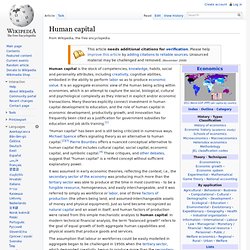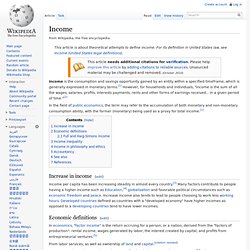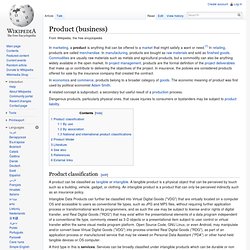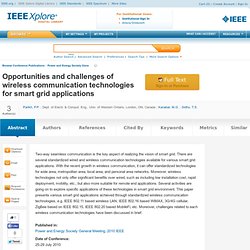

Contract. Proof of some or all of these elements may be done in writing, though contracts may be made entirely orally or by conduct.

The remedy for breach of contract can be "damages" in the form of compensation of money or specific performance enforced through an injunction. Both of these remedies award the party at loss the "benefit of the bargain" or expectation damages, which are greater than mere reliance damages, as in promissory estoppel. The parties may be natural persons or juristic persons. Infrastructure. Infrastructure is basic physical and organizational structures needed for the operation of a society or enterprise ,[1] or the services and facilities necessary for an economy to function.[2] It can be generally defined as the set of interconnected structural elements that provide framework supporting an entire structure of development.

It is an important term for judging a country or region's development. Building. A building is a man-made structure with a roof and walls standing more or less permanently in one place.

Buildings come in a variety of shapes, sizes and functions, and have been adapted throughout history for a wide number of factors, from building materials available, to weather conditions, to land prices, ground conditions, specific uses and aesthetic reasons. To better understand the term building compare the list of nonbuilding structures.
Human capital. "Human capital" has been and is still being criticized in numerous ways.

Michael Spence offers signaling theory as an alternative to human capital.[2][3] Pierre Bourdieu offers a nuanced conceptual alternative to human capital that includes cultural capital, social capital, economic capital, and symbolic capital.[4] These critiques, and other debates, suggest that "human capital" is a reified concept without sufficient explanatory power. The assumption that labour or workforces could be easily modelled in aggregate began to be challenged in 1950s when the tertiary sector, which demanded creativity, begun to produce more than the secondary sector was producing at the time in the most developed countries in the world. Clark's Sector model the for US economy 1850–2009[5] Accordingly much more attention was paid to factors that led to success versus failure where human management was concerned.
Income. Income is the consumption and savings opportunity gained by an entity within a specified timeframe, which is generally expressed in monetary terms.[1] However, for households and individuals, "income is the sum of all the wages, salaries, profits, interests payments, rents and other forms of earnings received... in a given period of time.

"[2] In the field of public economics, the term may refer to the accumulation of both monetary and non-monetary consumption ability, with the former (monetary) being used as a proxy for total income.[1] Increase in income[edit] Income per capita has been increasing steadily in almost every country.[3] Many factors contribute to people having a higher income such as Education,[4] globalisation and favorable political circumstances such as economic freedom and peace. Economic definitions[edit] In consumer theory 'income' is another name for the "budget constraint," an amount to be spent on different goods x and y in quantities and at prices . Product (business) In marketing, a product is anything that can be offered to a market that might satisfy a want or need.[1] In retailing, products are called merchandise.

In manufacturing, products are bought as raw materials and sold as finished goods. Commodities are usually raw materials such as metals and agricultural products, but a commodity can also be anything widely available in the open market. In project management, products are the formal definition of the project deliverables that make up or contribute to delivering the objectives of the project. In insurance, the policies are considered products offered for sale by the insurance company that created the contract. Dangerous products, particularly physical ones, that cause injuries to consumers or bystanders may be subject to product liability.
A product can be classified as tangible or intangible. In Time. Plot[edit] In 2169, people are born genetically engineered with a digital clock, bearing 1 year of time, on their forearm.

When they turn 25, they stop aging, but their clock begins counting down; when it reaches zero, that person "times out" and dies instantly. Time on these clocks is the universal currency; by touching arms, one person can transfer it to another, or to/from a separate clock (a "time capsule"). The country is divided into "time zones" based on the wealth of its population. In Time (2011. In Time - Movie Trailer Official (HD) Opportunities and challenges of wireless communication technologies for smart grid applications. Two-way seamless communication is the key aspect of realizing the vision of smart grid.

There are several standardized wired and wireless communication technologies available for various smart grid applications. With the recent growth in wireless communication, it can offer standardized technologies for wide area, metropolitan area, local area, and personal area networks. Moreover, wireless technologies not only offer significant benefits over wired, such as including low installation cost, rapid deployment, mobility, etc., but also more suitable for remote end applications.
Several activities are going on to explore specific applications of these technologies in smart grid environment. This paper presents various smart grid applications achieved through standardized wireless communication technologies, e.g.